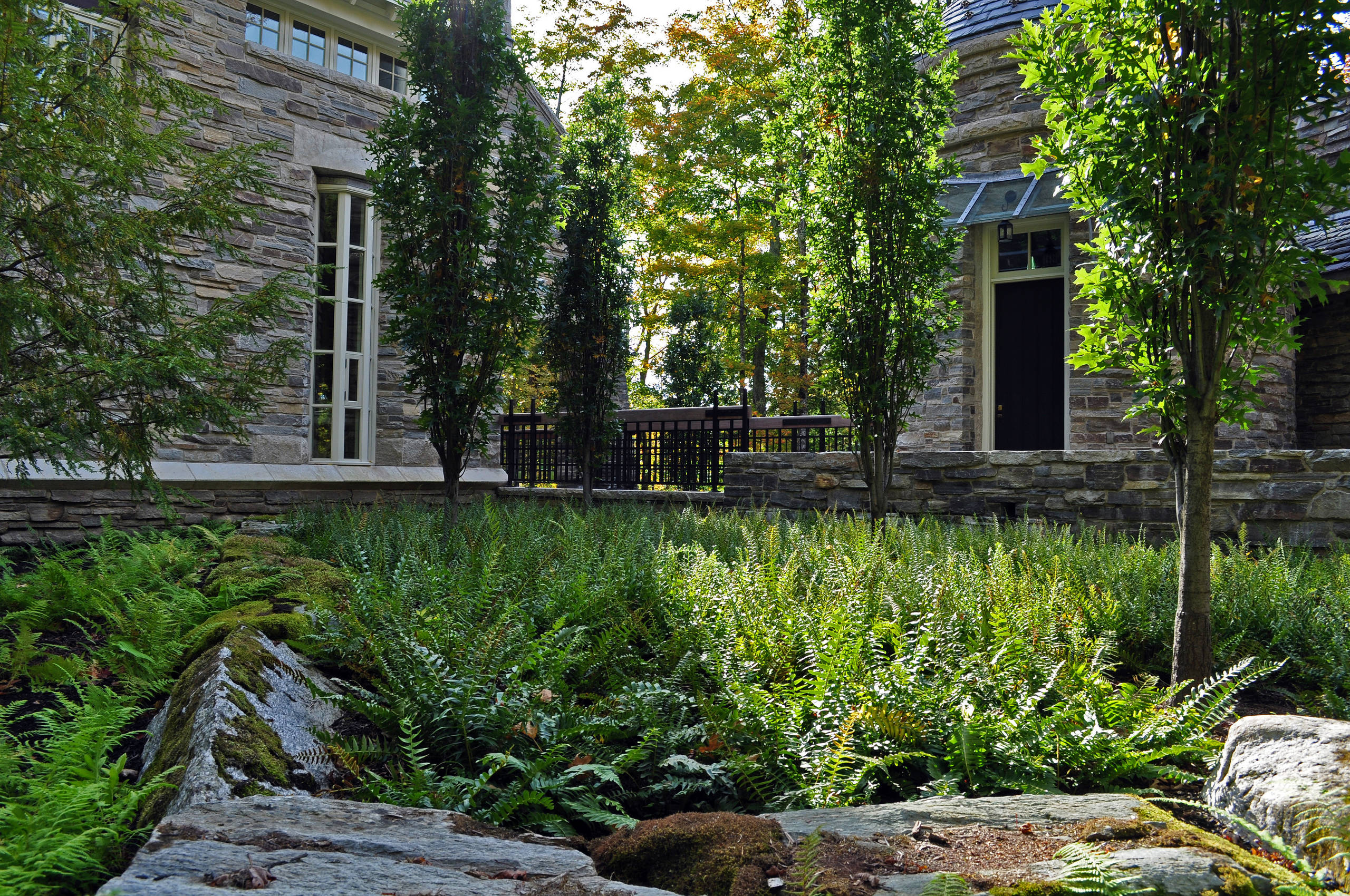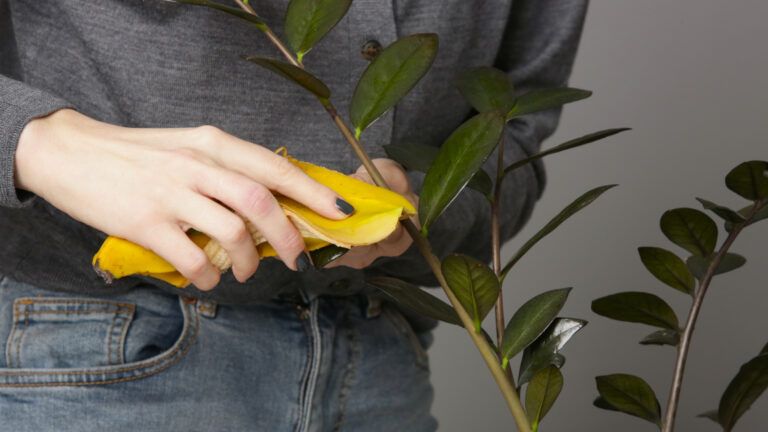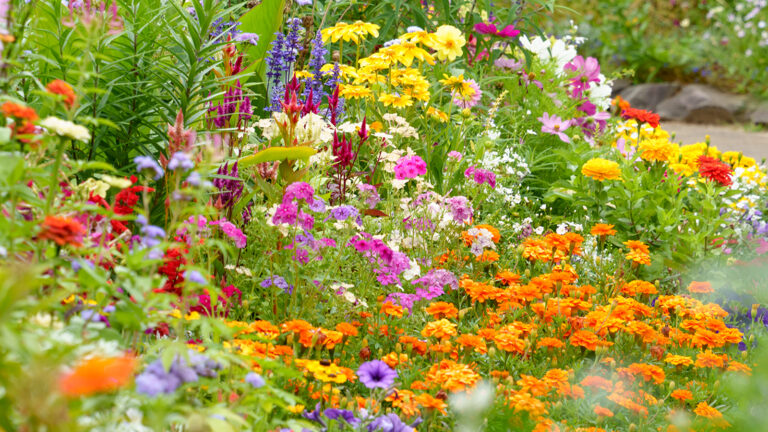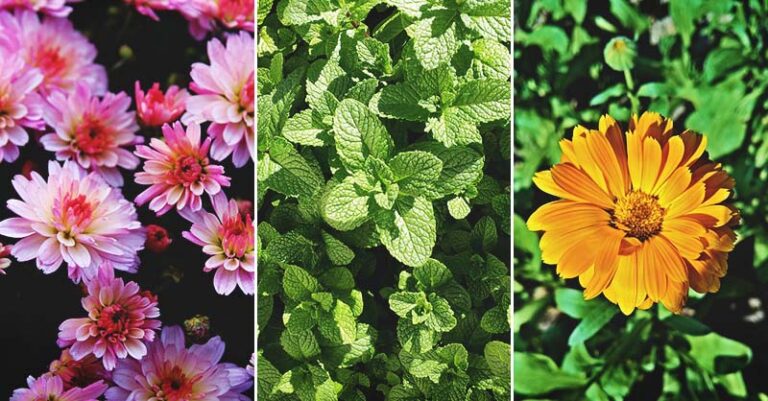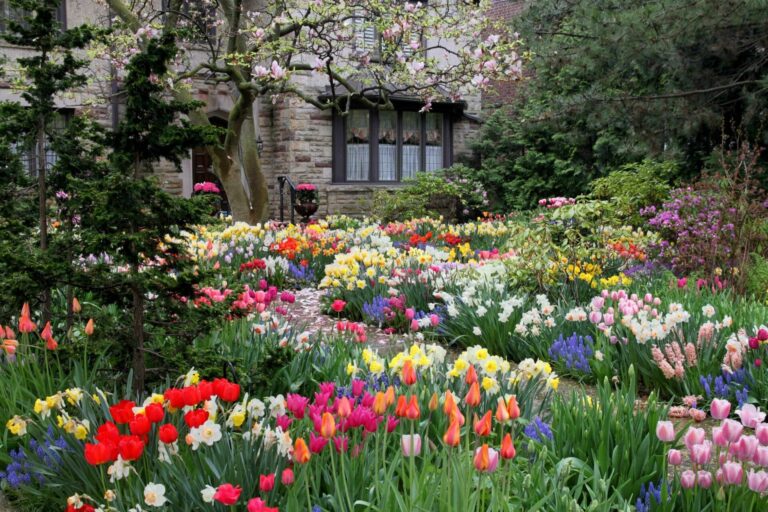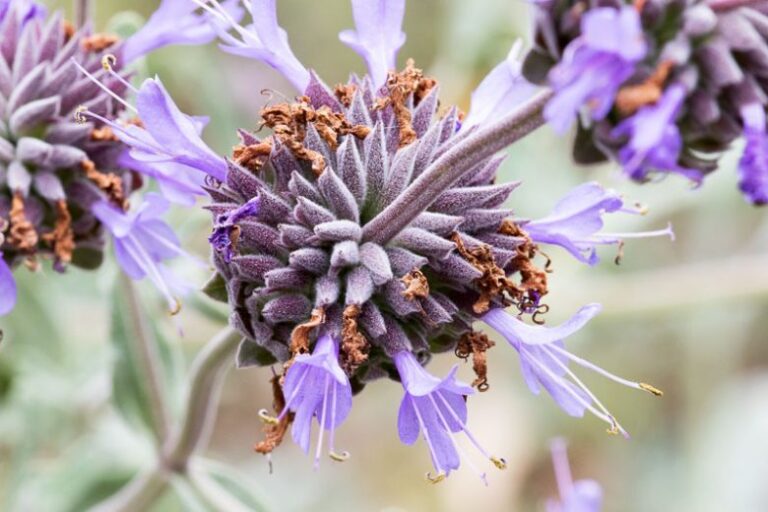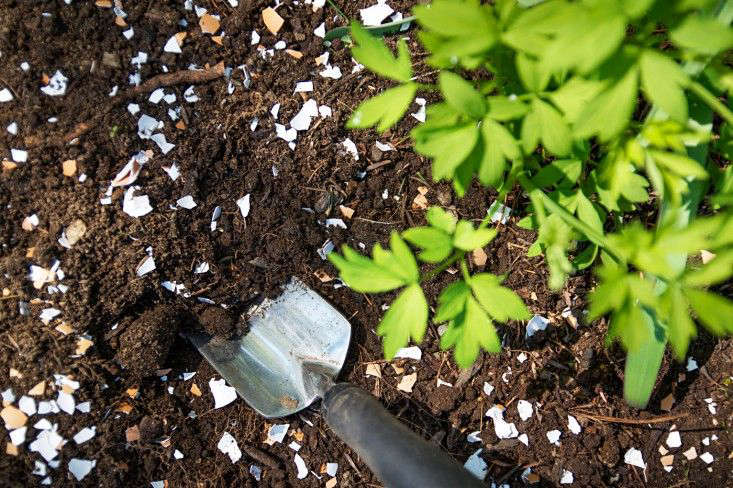8 Best Native Ground Covers to Replace Your Lawn | Low Maintenance
Native ground covers can transform your conventional lawn into a beautiful native plant arrangement which brings effortless style to your outdoor space while nurturing local wildlife. The eight chosen plant species maintain year-round visual interest while showing excellent drought tolerance and requiring minimal care which makes lawn care operations more efficient.
Native Ground Covers provide the best solution for lawn replacement because they offer multiple advantages. Traditional turfgrass lawns need regular maintenance which includes weekly mowing and regular watering and chemical fertilizers and continuous pest control. Native ground covers eliminate these burdens while providing superior environmental benefits. The plants have developed through thousands of years to survive in your local environment so they need only occasional care after their initial setup.
Native ground covers function as natural living mulch which prevents weeds from growing and protects the soil from erosion while supporting local wildlife including pollinators and beneficial insects and birds. The extensive root systems of these plants enhance soil structure while allowing better water penetration and storing more carbon than the limited root system of turfgrass. Best of all, many varieties offer stunning seasonal displays of flowers, berries, and colorful foliage that far exceed the visual interest of monotonous green turf.
The Eight Essential Native Ground Cover Varieties
1. Foamflower (Tiarella cordifolia) – The Shade Garden Star
Foamflower stands as the most refined native ground cover for shaded spaces which turns dull areas into beautiful woodland gardens. The plant produces delicate white flowers that grow in 8-10 inch spikes during springtime which create a misty appearance above its year-round green leaves.
The heart-shaped leaves display complex burgundy designs which run through their veins to create detailed patterns that add visual interest to the plant even when it is not producing flowers. Plants expand their territory by using stolons which create thick colonies that block weeds while keeping the area organized. Foamflower thrives in part to full shade with consistently moist, well-drained soil rich in organic matter.
Plant foamflower for the best visual effect by arranging three to five plants together at 12-18 inch intervals. The clumps will unite into a single uniform layer of foliage during the span of two growing seasons. The plant variety thrives best when planted under deciduous trees and along woodland paths and foundation plantings which serve as areas where traditional turfgrass fails to thrive.
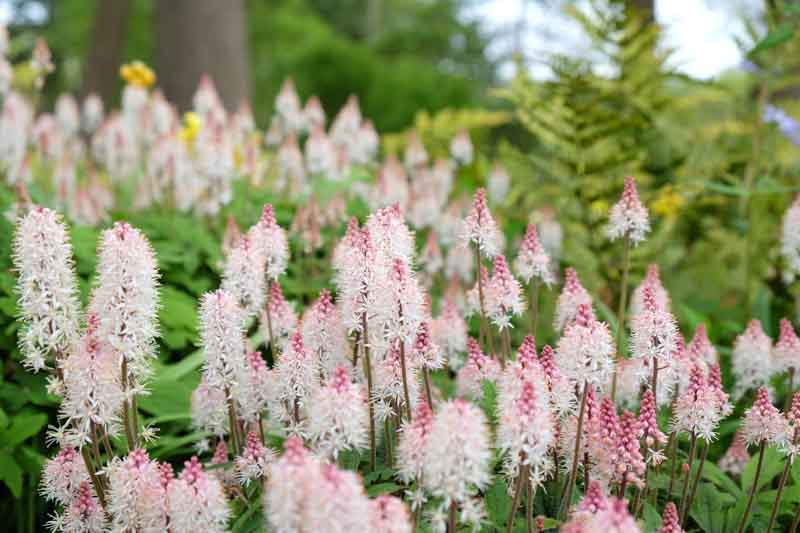
2. Green-and-Gold (Chrysogonum virginianum) – The Sunny Border Beauty
The Green-and-Gold plant produces cheerful yellow daisy-like flowers which create a continuous display of color throughout spring and early summer months. The glossy green leaves grow in tight rosettes which spread through rhizomes to form a thick weed-blocking mat that grows up to 4-6 inches tall.
The plant succeeds in both shaded areas and direct sunlight but it creates the most flowers when it receives full sun. Plants succeed in both wet and dry soil conditions which makes them suitable for areas that other ground covers cannot handle. The spreading habit of this plant is moderate and easy to manage which stops it from taking over neighboring plants.
Green-and-Gold creates beautiful color combinations when it grows with foamflower in dappled shade or when it forms a dense carpet under ornamental shrubs in sunny borders. The golden flowers serve as a magnet for native bees and butterflies and offer nectar during the peak pollinator activity times.
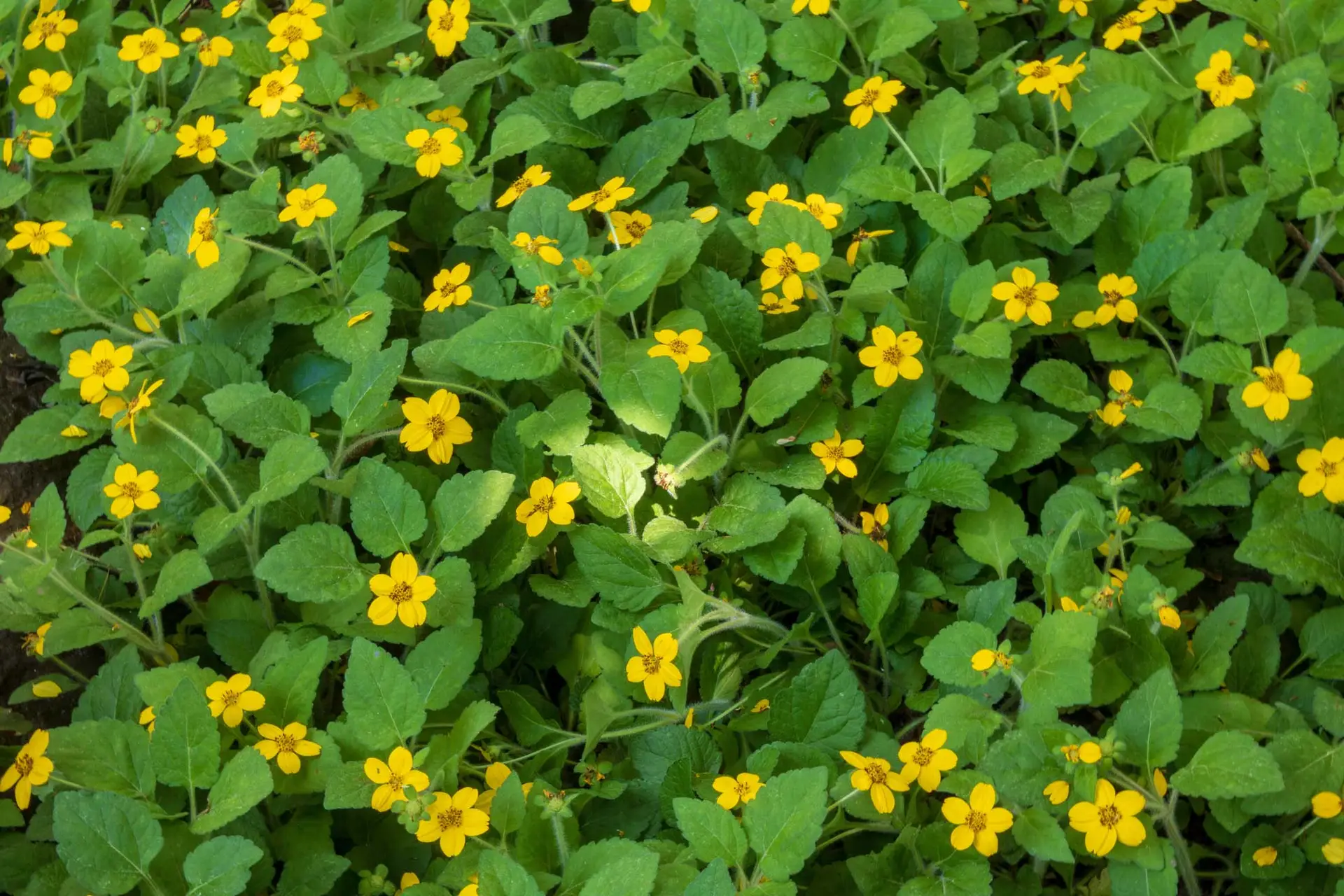
3. Wild Strawberry (Fragaria virginiana) – The Edible Carpet
The practical aspect of Wild Strawberry combines with its dainty appearance to produce small white flowers during springtime which lead to small berries that attract many wildlife species. The plants achieve their soft leaf texture through their trifoliate shape while their spreading runners help them form thick ground cover.
The adaptable native plant requires full sun to partial shade and accepts both wet and dry soil conditions after it becomes established. The plants grow to 4-6 inches tall while they spread rapidly to occupy empty spaces which makes them perfect for quick slope stabilization and large area coverage.
The crushed leaves create a pleasant scent which enhances the garden path experience while the white flowers serve as an early pollen source for pollinators. The management of wild strawberry remains simple because gardeners can control its spread by redirecting unwanted runners through cutting which enables them to define their garden borders.
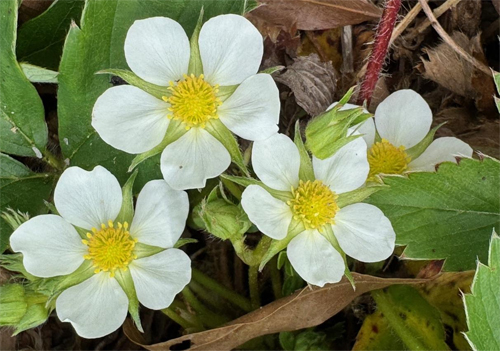
4. Golden Ragwort (Packera aurea) – The Woodland Wonder
Golden Ragwort transforms shady areas into golden meadows with spectacular 3-foot tall spikes of bright yellow flowers that emerge in early spring. The evergreen basal rosettes maintain permanent ground coverage throughout the year while the dramatic floral display makes the native plant garden display one of the most spectacular spring displays.
The aggressive spreader requires part to full shade conditions with constant moisture in the soil to quickly establish itself through underground rhizomes and abundant seed production. Plants show excellent adaptability because they can thrive in both wet and dry shaded environments after their initial growth period. The shallow root system of this plant allows for easy control of unwanted spread by hand-pulling.
Golden ragwort proves to be a more effective invasive species control in shaded environments than English ivy because it offers equivalent ground coverage to English ivy while providing better wildlife benefits. The flowers support numerous native bee species while the foliage serves as host plants for several butterfly species.

5. Virginia Creeper (Parthenocissus quinquefolia) – The Versatile Climber
The plant Virginia Creeper functions as a climbing vine and ground cover which produces thick mats of five-fingered leaves that transform into vibrant crimson during autumn. This extremely adaptable native tolerates the widest range of growing conditions, from deep shade to full sun and from wet to extremely dry soils.
The spreading stems produce roots during their growth which forms a wide network that prevents weed growth and protects the soil from erosion. The plant produces small green flowers during summer which then turn into purple berries that serve as essential sustenance for birds during their migration. The adhesive tendrils allow plants to climb walls or trees without causing structural damage.
The plant Virginia creeper functions best as a ground cover when planted on slopes and in areas with challenging conditions and weak soil and under tree canopies where grasses fail to thrive. The plant becomes more attractive during autumn because of its dramatic fall color and its evergreen stems which keep their shape in areas with mild winter conditions.

6. Wild Ginger (Asarum canadense) – The Shade-Loving Specialist
Wild Ginger creates luxurious carpets of heart-shaped leaves with subtle silvery patterns that appear almost tropical in shady woodland settings. The maroon flowers that hide beneath plant leaves produce a light ginger scent to draw specific pollinators yet stay out of sight from people visiting the garden.
The plant grows through rhizomes at a slow rate to create dense colonies which block weeds yet keep its appearance neat. Plants prefer rich, well-drained soil in part to full shade conditions with consistent moisture during the growing season. The large leaves produce distinct textural contrasts when arranged with the dainty ferns and grasses.
Wild ginger excels in naturalistic woodland gardens, along shaded pathways, or as underplanting for larger shade trees. The spreading habit of this plant develops slowly and remains easy to manage which makes it perfect for smaller gardens that need protection from invasive species.
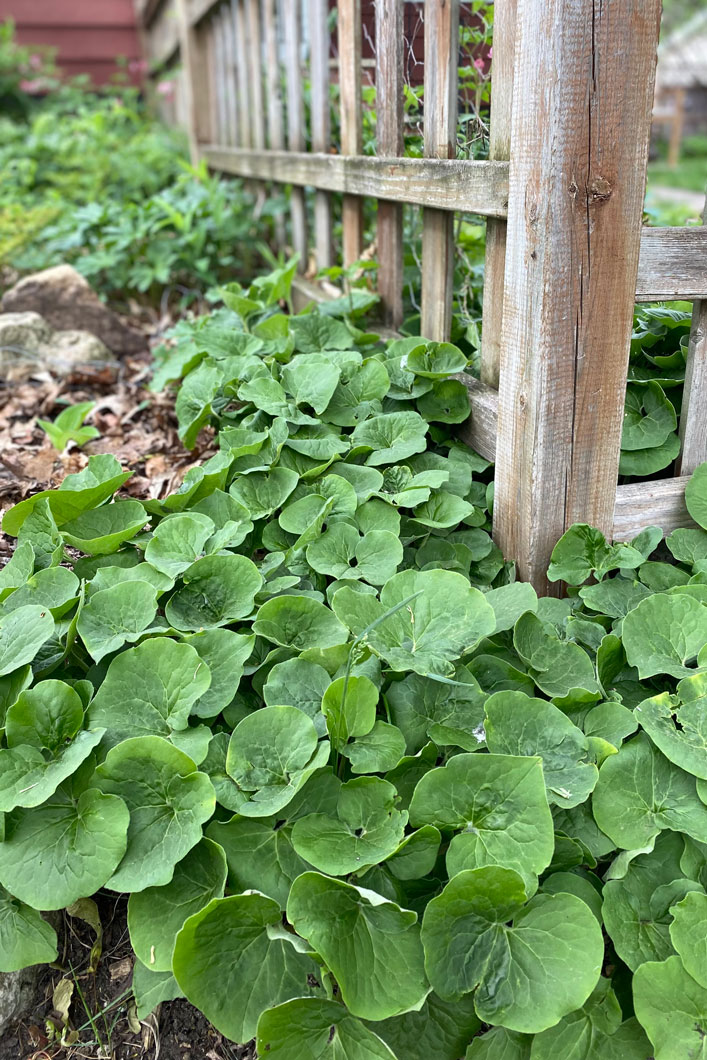
7. Pennsylvania Sedge (Carex pensylvanica) – The Grass Alternative
Pennsylvania Sedge functions as the top native turfgrass alternative because it forms dainty fountain-like clusters of thin leaves which flow gracefully with air movement. The native plant grows 6-8 inches tall and uses rhizomes to spread at a slow rate which results in natural tree meadow formation.
Pennsylvania sedge establishes itself in shaded areas and needs only occasional maintenance after its initial growth. The plants need occasional mowing to control their height but their natural height provides better visual appeal and supports wildlife habitats.
The sedge achieves its best results when planted in wide sweeping patterns that mimic natural prairie environments and require minimal care to achieve outstanding visual effects. The fine texture of this plant creates beautiful contrast with shade plants that have larger leaves while providing continuous interest throughout the year in regions with mild winters.
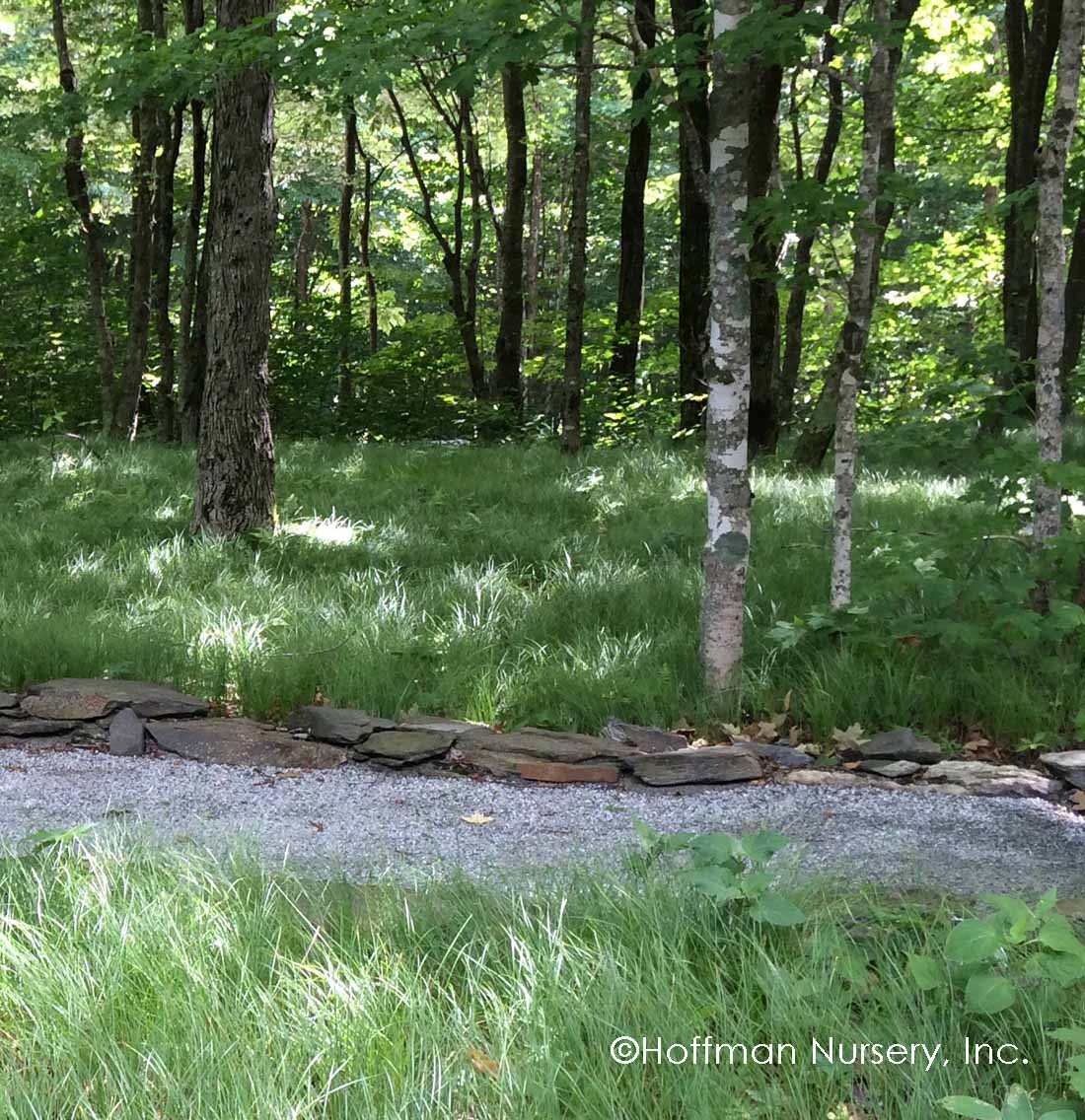
8. Common Blue Violet (Viola sororia) – The Naturalized Beauty
The Common Blue Violet creates natural charm to lawns through its heart-shaped leaves and its numerous purple flowers that appear in spring. The native plant receives criticism but it should be acknowledged for its outstanding ability to spread across the ground and its quick growth and wide tolerance of different environmental conditions.
The spreading habit of this plant forms thick mats which serve as turfgrass substitutes and deliver essential nectar resources to pollinators during the first part of the growing season. The plants thrive under full sun exposure and partial shade conditions while they succeed in both wet and dry soil environments which makes them suitable for multiple landscape uses.
The spreading growth pattern of Blue violets makes them most successful in naturalized lawn environments because they do not need any boundaries to thrive. The edible flowers and leaves add culinary interest while providing important host plant resources for numerous butterfly species, particularly the fritillary butterflies.
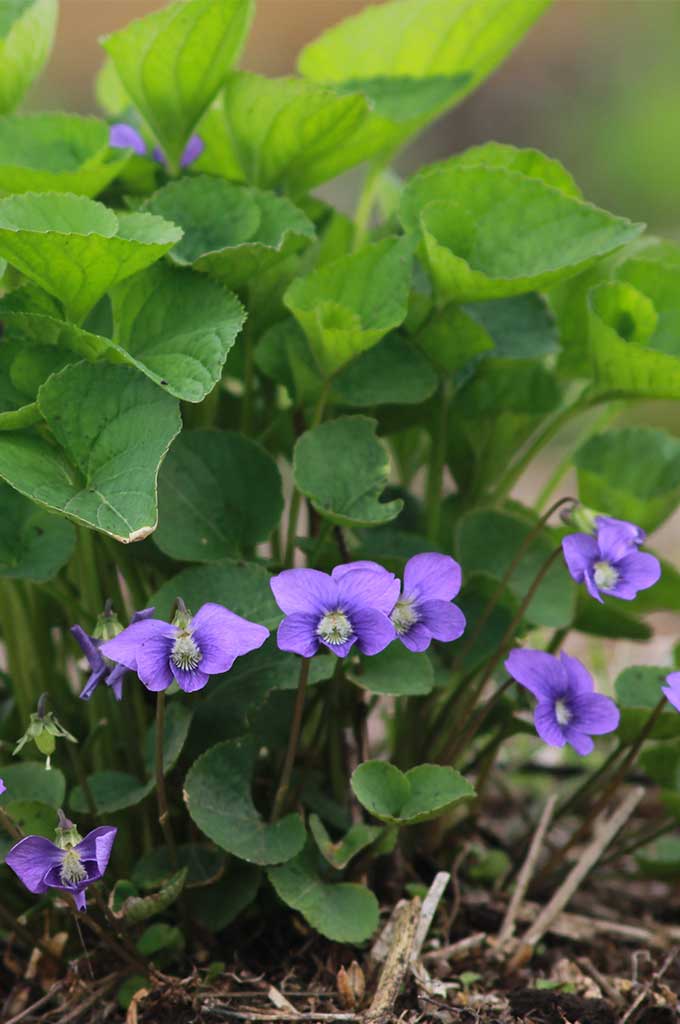
Design Strategies for Maximum Visual Impact
Native ground cover installations achieve success through the strategic combination of multiple plant species which create varied patterns that provide seasonal beauty while addressing site requirements. The most effective designs combine species through harmonious arrangements of texture and color and plant growth patterns to establish visually attractive areas which also support ecological health.
Combine foamflower and green-and-gold in partially shaded areas for contrasting flower colors and foliage textures. The white foamflower spires create a beautiful contrast with green-and-gold daisies through their white color and the daisies’ yellow petals and the plants’ varying heights produce depth in the arrangement. The plants expand their territory at equivalent speeds which stops any single species from taking control of the area.
Create stunning woodland gardens by massing golden ragwort with wild ginger under deciduous trees. The spring flowers of ragwort create a dramatic display which rises above the shiny leaves of wild ginger plants. The various growth patterns allow for complete coverage of the surface area and generate multiple visual effects.
Wild strawberry should be combined with Pennsylvania sedge in sunny locations to develop naturalistic meadows which support wildlife and create pleasing visual effects. The low-growing strawberries fill gaps between taller sedge clumps while the different textures create dynamic visual rhythms throughout the growing season.

Installation and Establishment Guidelines
Proper site preparation forms the foundation for successful native ground cover establishment. Start by taking out the current turfgrass through sheet mulching with cardboard and wood chips or solarization with clear plastic or mechanical sod cutters. The elimination of all competing vegetation leads to the prevention of establishment failures and reduces the requirement for continuous maintenance activities.
Check the soil conditions and adjust them according to the needs of the selected plant varieties. Native ground covers require well-drained soil with organic matter but Virginia creeper succeeds in growing in poor soil conditions. Heavy clay soils need compost to improve drainage yet sandy soils require organic matter to increase their water retention.
The best time to plant ground covers exists during spring and fall months because these seasons offer comfortable temperatures and sufficient natural rain. The distance between plants depends on how fast each species spreads through the area because wild strawberry spreads quickly so it needs 18-24 inch spacing but foamflower spreads slowly so it requires 12-18 inch spacing for fast coverage.
Water newly planted ground covers regularly during their first growing season to establish deep root systems. The majority of plant species need steady water supply when they first grow but they develop better resistance to dry conditions as they reach full growth. New plants need 2-3 inches of organic mulch to be placed around them for weed suppression and moisture conservation.
:strip_icc()/Yellow-Chrysogonum-7yX3rHmUKxk95edsiqn6gl-2bd0dafb6952457a953d67dd0336e2e3.jpg)
Long-Term Maintenance and Care
Native ground covers that have already established themselves require minimal maintenance than turfgrass but proper care will optimize their appearance. Check soil moisture levels when dry spells last for an extended time because woodland plants require consistent soil dampness. Deep watering at intervals promotes the growth of deep roots which helps plants survive dry conditions.
Regularly divide or remove unwanted growth of aggressive spreaders such as golden ragwort and Virginia creeper to control their spread. The activities prevent overcrowding which enables plants to develop properly. Spring is the ideal time for division, allowing plants to recover during the growing season.
Remove fallen leaves from evergreen ground covers in fall to prevent smothering of foliage and reduce disease pressure. A low-setting leaf blower or light raking tool serves to remove debris from plants without causing any damage. The basic maintenance work serves two purposes by keeping the garden visually appealing during winter months and protecting it from pests and diseases.
The mulch layers require yearly replacement to maintain soil moisture levels and stop weed development. The process of ground cover growth leads to dense coverage which reduces mulching requirements until organic matter becomes unnecessary.
Seasonal Interest Throughout the Year
Native ground covers provide year-round visual interest through the selection of plants which display unique seasonal features. The garden comes alive in spring when foamflower and wild strawberry and golden ragwort create white and yellow flower displays that cover the ground.
During summer months green-and-gold and wild strawberry plants produce additional blooms while their leaves achieve their maximum growth. The plants create a sophisticated visual base through their multiple green tones and leaf textures which enhance the appearance of surrounding garden features. Purple fruits on Virginia creeper and wild strawberry add subtle color accents.
The season of fall brings out vibrant color transformations in different plant species as Virginia creeper displays deep crimson hues and Pennsylvania sedge turns golden while wild strawberry leaves become burgundy. The autumn displays create visual effects that match the beauty of conventional landscaping shrubs during their seasonal displays.
The cold season brings interest from plants such as foamflower and wild ginger because their evergreen leaves stay green throughout winter. Seed heads and dried stems maintain structural integrity while serving as food sources for wildlife and frost creates crystalline patterns on the remaining plant leaves.
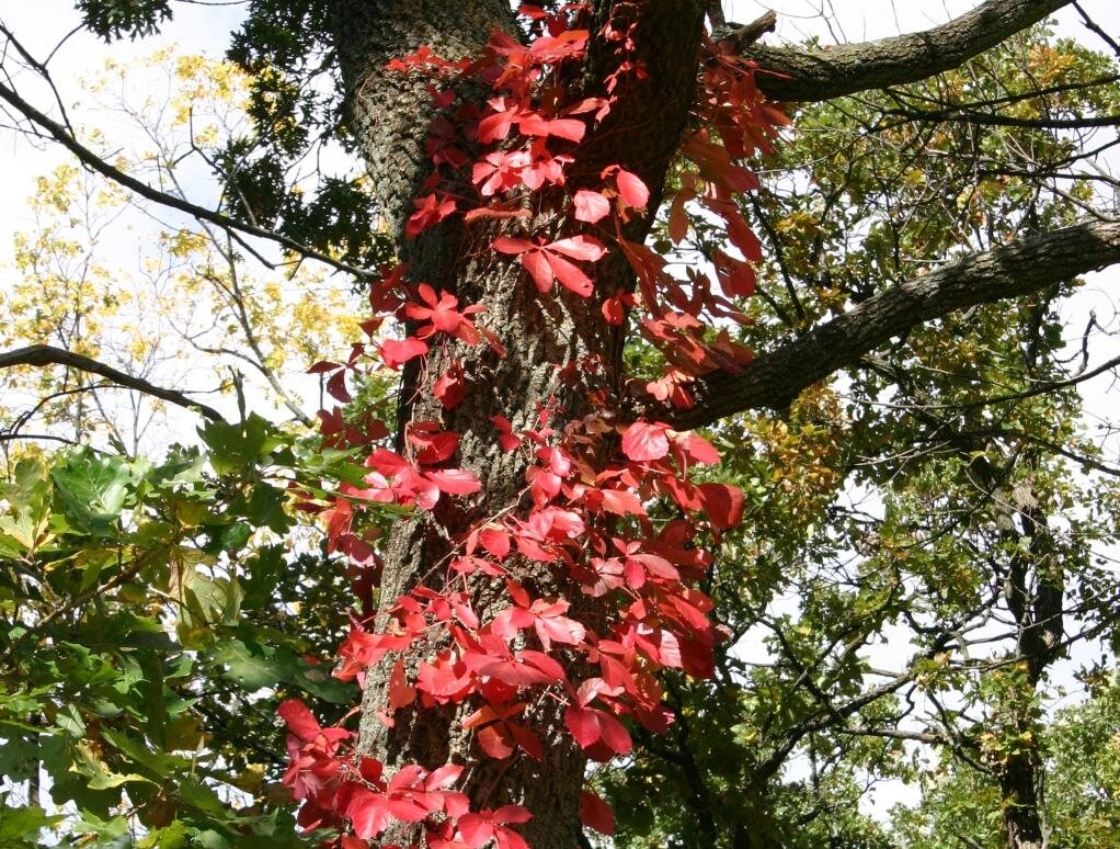
Troubleshooting Common Challenges
Native ground cover installations need scheduled maintenance to handle any emerging problems which arise from following correct planning procedures. Soil conditions that are inadequate along with insufficient sunlight and competition between plants can lead to the formation of bare spots. The problems can be solved by changing the soil conditions and choosing different plant species and adjusting the number of plants per area.
Weed invasions during establishment are normal and expected. The process of hand-pulling seeds on a regular basis prevents seed production while the developing ground covers create density to decrease soil pressure. Avoid using chemical herbicides because they can harm beneficial plants while also disrupting the natural life in the soil.
The plants show poor flowering and growth because their site conditions do not match their requirements especially when sun-loving species receive too much shade and moisture-dependent varieties grow in dry soil. Assess growing conditions and transplant struggling plants to more suitable locations if necessary.
Animal browsing affects some species, particularly wild strawberry and Pennsylvania sedge. Young plants require protection through temporary fencing when damage becomes extreme or you should select deer-resistant plants for locations where deer populations are high.
Environmental Benefits and Wildlife Support
Native ground covers provide various environmental benefits which extend past their decorative value. Deep root systems improve soil structure while enabling better water absorption and they outperform shallow turfgrass roots in carbon capture from the atmosphere. The underground networks serve two main purposes by defending the soil from erosion and minimizing stormwater drainage.
The flowering species enable pollinator population support through their essential nectar and pollen production during vital times. Early spring blooms from foamflower and wild strawberry provide essential food sources when few other plants are flowering. Golden ragwort and green-and-gold extend the blooming season through summer months.
Wild strawberry and Virginia creeper fruit production supports various bird species while their dense foliage serves as shelter and nesting habitat for small animals. The different plant heights and textures in this landscape establish multiple ecological spaces which support more wildlife species than a single species of turfgrass.
Natural pest control occurs through attraction of beneficial insects that prey on garden pests. The health of soil biology improves when chemical inputs decrease because it leads to healthier plants that defend against diseases through natural means instead of synthetic treatments.

Cost Considerations and Return on Investment
Native ground covers require more money for their first installation than traditional turfgrass seeding or sod installation but their long-term cost-effectiveness makes up for the initial investment. The elimination of mowing operations leads to lower expenses for equipment maintenance and reduced fuel usage and shorter maintenance periods. Water conservation stands as an essential practice for areas that experience deteriorating drought situations and increasing water service costs.
Reduced fertilizer and pesticide applications save money while eliminating exposure to potentially harmful chemicals. Local governments should provide financial incentives to residents who replace their grass lawns with native plants because it leads to increased economic benefits for native plant landscaping.
The value of properties increases when homeowners select sustainable landscaping designs which need low maintenance and draw environmentally conscious homebuyers. Native plant installations serve as evidence of sustainable practices which appeal to contemporary homebuyers in the real estate industry.
Long-term durability eliminates annual replacement costs associated with struggling turfgrass in challenging growing conditions. Native ground covers succeed in areas where conventional lawn maintenance proves challenging to establish permanent solutions for challenging locations.
Transforming your landscape with these eight native ground cover varieties creates elegant, sustainable gardens that thrive with minimal intervention while supporting local ecosystems. Native ground covers serve as the intelligent selection for contemporary landscapes because they provide both attractive visual effects and ecological benefits and require minimal upkeep.
References and Additional Resources
- Native Plant Trust Plant Finder – Comprehensive database of native plants for New England
- Lady Bird Johnson Wildflower Center – National native plant database and resources
- Prairie Moon Nursery – Native plant nursery with detailed growing guides
- Gardenia Native Plant Guide – Extensive native plant care information
- Mt. Cuba Center – Research and education center for native plants

